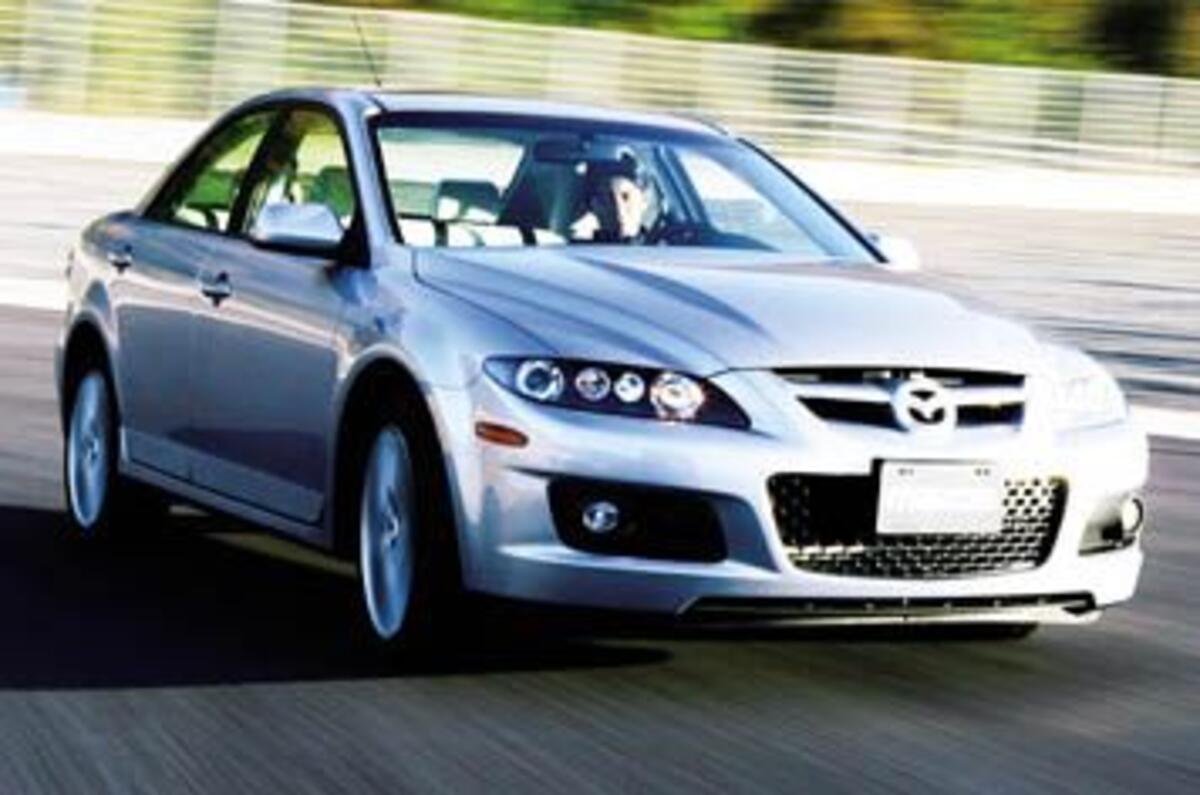By the time the Mazda 6 MPS goes on sale in the UK in September next year, over three years will have passed since we first saw the car in concept form. That’s enough time to engineer a whole new car, and a long time to wait for a high-performance derivative to give the 6 an image and sales boost.
But as the first car to bear the new MPS performance badge, it has to be right. Joe Bakaj, the Brit who did his career no harm at all as chief engineer on the current Ford Mondeo, is now head of product development at Mazda. He is famously thorough, and determined that only ‘credible’ cars will bear the MPS badge. The list of changes he’s made to the standard 6 is long and impressive; there’s far more at work here than a bigger engine and a bodykit.
Pity the styling doesn’t reflect this. Peter Birtwhistle, another Brit, heads Mazda’s European design studio and styled the concept shown at Paris in 2002. The production car is almost unchanged and stays true to his rejection of the wings, scoops and spoilers that usually mark a turbocharged Jap saloon in favour of a more subtle, sophisticated look. But it just looks too subtle to us; other than the hump in the bonnet that conceals a duct channelling air to the intercooler there’s little to get excited about. There are new 18-inch rims, a deeper front air dam, new rear lamps and twin exhausts, but the MPS doesn’t grab your attention.
Inside, the layout is the same as that of more mundane 6s, which means decent rear legroom and boot space and a fantastic driving position with a seat that cranks down all the way, well-set pedals and a vast range of adjustment in the steering column. Mazda has wisely chosen not to mask the 6’s excellent steering feel with a fat sports wheel; instead you get the standard item in leather. Some of the trim has been upgraded, with better-quality dials and a blue-painted finish on the highlight panels.
But the cosmetic changes pale next to the thoroughness of the re-engineering. It starts with the body-in-white. Instead of increasing stiffness with a couple of strut braces, whole new chassis sections have been bolted in behind the rear seats and the dashboard, and the suspension mountings have been reinforced. Mazda claims a 50 per cent increase in torsional stiffness for the MPS – usually only achieved with a full model change – and says it will build the MPS just as a saloon because the hatch and estate can’t be made stiff enough.
The standard 6’s alert steering has been left alone and the wishbone front, multilink rear suspension remains, but with higher spring rates, thicker anti-roll bars and retuned bushes and dampers. The ride height remains the same and the new wheels get Bridgestone RE050 tyres. Fortunately for ride comfort, they’re of the non-run-flat variety.
The driveline is even more impressive, and almost every aspect of it is new. The aluminium block is shared with the 2.3-litre four used in the standard Mazda 6, but the direct-injection head and turbo are new and allow it to crank out an impressive 254bhp at 5500rpm and 280lb ft at 3000rpm.
Using these two together makes a lot of sense and you can tell that Mazda’s engineers are slightly sore that the Volkswagen Group brought out a 200bhp direct-injection turbo in the A3 and Golf GTi a few months ago. Spraying the fuel directly into the cylinders allows more air to be drawn in, increasing volumetric efficiency. Also, the aerosol effect of the fuel as it atomises cools the chamber and allows a higher compression ratio.

















Add your comment